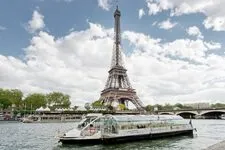History of the Louvre Museum
A symbol of Paris's cultural radiance, the Louvre is much more than a museum. An ancient royal palace transformed into an artistic showcase, it houses invaluable treasures, from the Mona Lisa to the Winged Victory of Samothrace, including the Code of Hammurabi.
Its galleries span centuries and civilizations, offering a fascinating journey between antiquity, the Renaissance, and modernity. Under the glass roof of its iconic pyramid, the Louvre continues to amaze with its richness and history. An essential stop to dive into the heart of art and human genius.

The Louvre Museum is one of the largest museums in the world, located in the heart of Paris in the 1st arrondissement. Nearly 35,000 objects, from prehistory to the 21st century, are displayed over an area of 60,600 m². With over 8 million visitors each year, it is the most visited museum in the world.
The museum is located in the Palais du Louvre, once a fortress built at the end of the 12th century under Philip II. The remnants of the fortress are visible in the basement of the museum. The building has been enlarged several times to form the current Palais du Louvre. In 1682, Louis XIV chose the Palace of Versailles as his residence, leaving the Louvre primarily as a place to display the royal collection. In 1692, the building was occupied by the Academy of Inscriptions and Belles-Lettres and the Royal Academy of Painting and Sculpture, which held the first of a series of salons in 1699. The Academy remained at the Louvre for 100 years. During the French Revolution, the National Assembly decreed that the Louvre should be used as a museum to display the nation's masterpieces.
The museum opened on August 10, 1793, with an exhibition of 537 paintings, the majority of the works being royal and goods confiscated from the church. Due to structural issues with the building, the museum was closed from 1796 until 1801. The size of the collection increased under Napoleon, and the museum was renamed the Napoleon Museum. After Napoleon's defeat at Waterloo, many works seized by his armies were returned to their original owners. The collection was further increased during the reigns of Louis XVIII and Charles X, and during the French Second Empire, the museum gained 20,000 pieces.
In 2008, the collection was divided among eight conservation departments: Egyptian Antiquities, Near Eastern Antiquities, Greek, Etruscan and Roman Antiquities, Islamic Arts, Sculpture, Decorative Arts, Paintings, Prints and Drawings.
Activities nearby

Louvre Museum

Picasso Museum

Centre Pompidou - Beaubourg

Visit the Conciergerie of Paris

Batobus Paris

Tootbus

Musée d'Orsay
